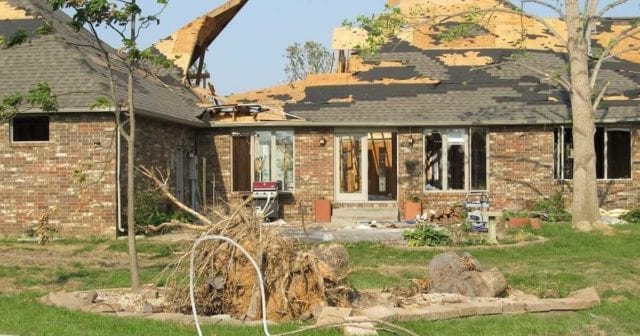When you bought your homeowners insurance policy, you chose a replacement cost policy. If the worst ever happened, you didn’t want to worry about how to rebuild or replace your home or belongings.
Then a storm hit. Your roof was damaged so badly that it had to be replaced. The estimate you received was $10,000. You filed your claim and waited for the check. When you received it, it was significantly lower than $10,000 – closer to $5,000. What gives?
You’re dealing with withheld depreciation.
UNDERSTANDING WITHHELD DEPRECIATION
Virtually every insurance company uses withheld depreciation for replacement cost policies. Withheld depreciation, sometimes called recoverable depreciation, means that until you show proof that you’ve replaced, repaired, or rebuilt your damaged property, you’ll only receive the actual cash value minus your deductible.
Everything depreciations over time. The older something is – like your roof – the lower its cash value. A 25-year roof loses four percent of its value every year. Assuming that your destroyed roof was 10 years told when you filed your claim, 40 percent (10 years x 4 percent) would be the depreciation amount withheld from the $10,000 estimate. If you have a $1,000 deductible, this amount would also be factored in. In this scenario, you’d receive an initial payment of $10,000 minus 40 percent ($4,000) and minus the deductible ($1,000) for a total of $5,000.
The good news is that this depreciated amount is recoverable as long as you do what you’re supposed to do – repair, replace, or rebuild as appropriate.
HOW TO GET YOUR WITHHELD DEPRECIATION BACK
Getting your depreciation back is not impossible. You simply need to have the damage repaired or replaced. Insurance companies don’t want people to take the money and decide not to fix the problem so this is their solution.
Most of the time, you’ll have the work done and receive invoices and receipts for everything. This documentation will be used to calculate what you’re owed. If the repair totals the amount you already received, you won’t receive anything additional. If you spent more than you received, you’ll be paid the difference between the two. It’s important to keep good records and take pictures to show proof of repair so there’s no delay in the process.
In some cases, depending on your insurance company, they may pay the contractor directly – the first payment at the start of the job and then the remaining withheld depreciation once the job is completed. In this case, you’d need to work closely with your insurance agent and your contractor to make sure all documentation is submitted. This option is good if you can’t pay for the full cost of the replacement without help.
WHY WITHHELD DEPRECIATION EXISTS
Holding back a portion of your payment isn’t because insurance companies are out to get you. Instead, it’s to make sure that people who receive payment based on the replacement value actually replace what’s been damaged. In some cases, a homeowner will take the payment they receive and never do anything else.
The problem with this is that if you ever decide to file a claim with that problem again – a damaged roof or anything else – it will be denied. Even if you change insurance companies, you’ll either have to replace the problem within 30 days of signing up or never have the claim approved in the future. Insurance companies have access to claim history even when you weren’t their customer so there’s no pretending on this one.
Total replacement cost policies are still the best option for most people. As long as you make the repair or replace what was lost, you’ll receive the total amount you’re owed. It may just take a while to receive. Truly, it protects you as much as the insurance company. When your home is in good repair, future claims are minimized.
If you’re curious about what kind of policy you have or have questions about a recent claim, contact us at Charlotte Insurance. We’re here to help.

